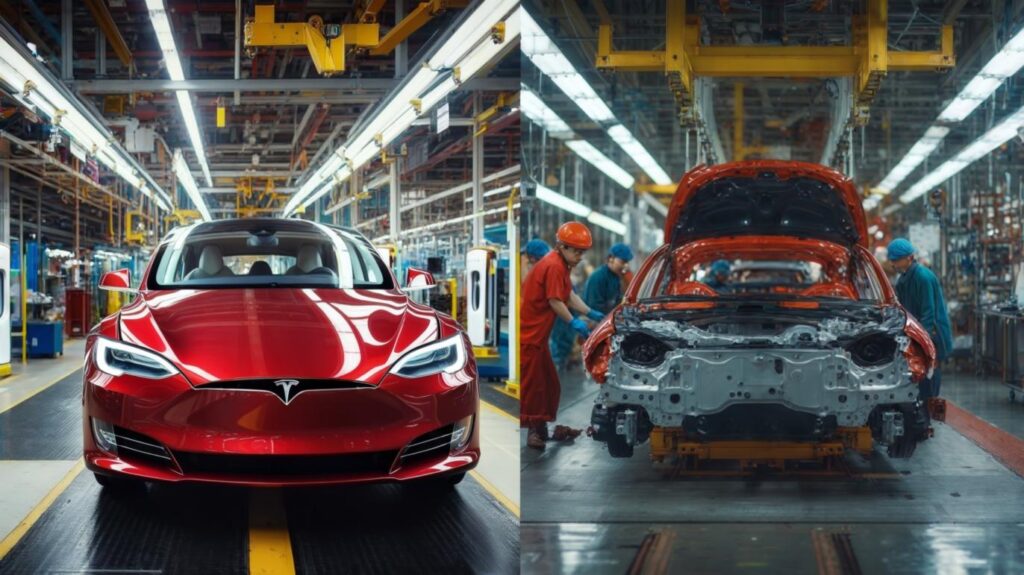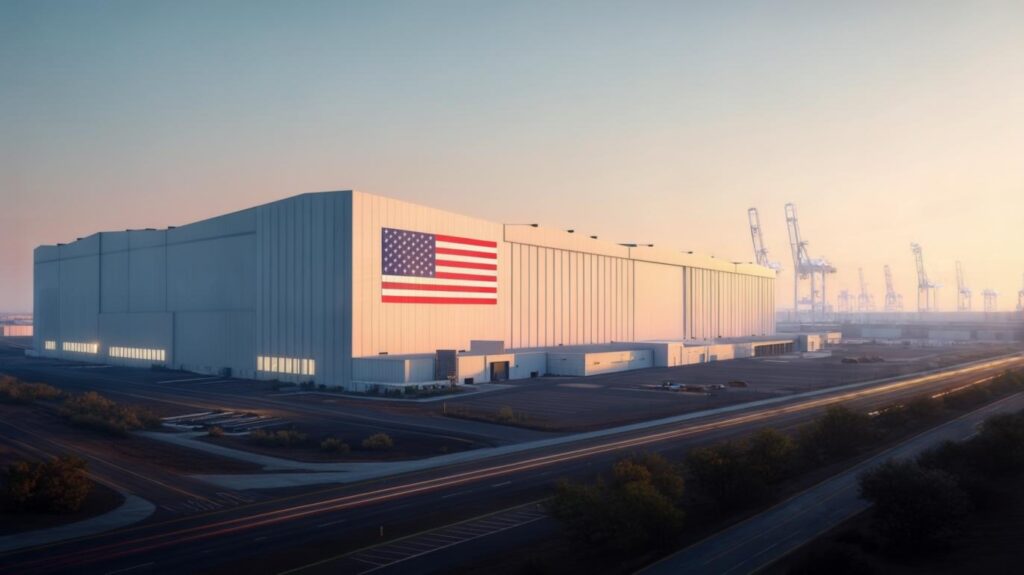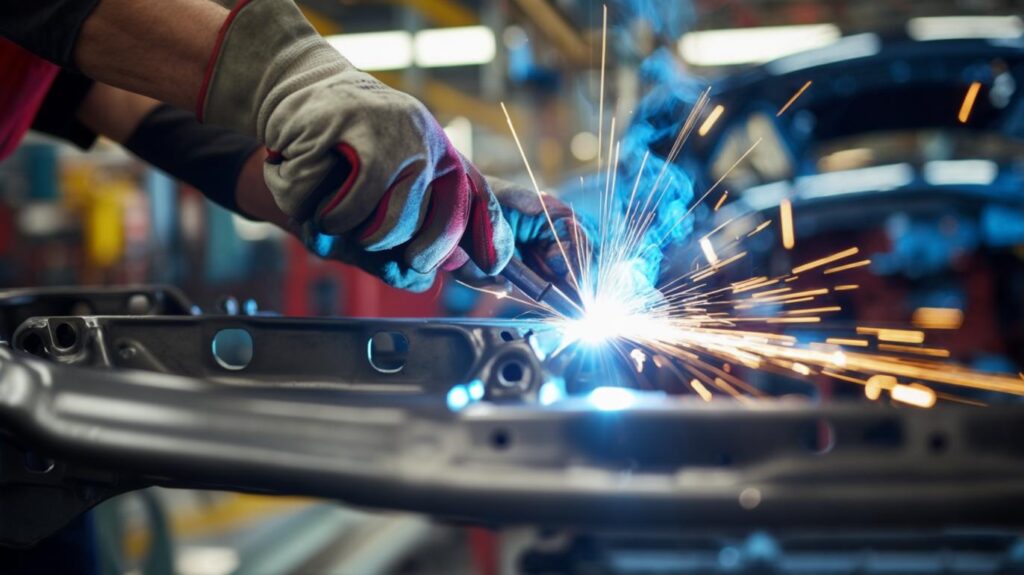Table of Contents
The automotive industry is bracing for a significant impact as new tariffs on automobiles and auto parts loom on the horizon. Among the manufacturers facing these economic headwinds, Tesla finds itself in a relatively favorable position due to its strong domestic production footprint. The electric vehicle (EV) giant has long championed its “Made in America” status, and this distinction may offer it a strategic advantage in the evolving economic landscape.

Tesla’s Position as the Most American-Made Car
On Sunday, Tesla’s official social media account reaffirmed its domestic manufacturing prowess with a bold statement: “Btw, Teslas are the most American-made cars.” This claim aligns with independent research from Cars.com, which has ranked Tesla at the top of its American-Made Index since 2021. The index evaluates several criteria, including final assembly location, domestic content in vehicle parts, and employment of U.S. manufacturing workers. According to Patrick Masterson, lead researcher for the Cars.com index, “Tesla’s manufacturing, both as the location of final assembly and the componentry of the vehicles, is as high as you could possibly get for a U.S.-made vehicle.”
This manufacturing advantage comes at a time when newly imposed 25% tariffs on imported vehicles and car parts, set to take effect on April 3, are poised to disrupt the automotive market. Analysts predict these tariffs will lead to thousands of dollars in price hikes for consumers, particularly impacting manufacturers that rely on offshore production. While competitors such as General Motors (GM) and Ford have extensive manufacturing operations in Mexico, Tesla’s domestic production base insulates it from the most severe repercussions of the tariffs.
The Complexities of Domestic Production
Despite Tesla’s significant American presence, the concept of a fully domestically produced car remains elusive. Even CEO Elon Musk acknowledged this reality, tweeting, “Important to note that Tesla is NOT unscathed here. The tariff impact on Tesla is still significant.”
Tesla has not disclosed the full extent of its dependence on international suppliers. However, a National Highway Traffic Safety Administration (NHTSA) report from October 2024 revealed that approximately 20% to 25% of Tesla’s vehicle components are imported. The majority of Tesla’s parts—between 60% and 75%—originate from the United States and Canada. The American Automobile Labeling Act (AALA) currently groups Canadian-made auto parts with American-made ones, although the new tariffs also target Canadian imports, adding another layer of complexity.
While Tesla maintains that its final assembly, engine production, and battery manufacturing occur within the U.S., it does source a portion of its components from Mexico. According to Wolfe Research, this reliance could cost Tesla an estimated $1.6 billion annually in additional expenses due to the tariffs.
To further mitigate these costs, Tesla has been exploring ways to strengthen its domestic supply chain. The company has ramped up investments in U.S.-based suppliers for crucial components such as semiconductors, battery minerals, and software systems. For instance, Tesla has formed partnerships with American lithium producers and battery manufacturers to reduce reliance on foreign supply chains.

Tesla’s Competitive Edge in the EV Market
The new tariffs present a unique opportunity for Tesla to strengthen its position in the electric vehicle sector. Among U.S. automakers, Tesla remains staunchly anti-union, a stance that differentiates it from traditional manufacturers such as Ford, GM, and Stellantis, which have deeply entrenched relationships with labor unions.
According to Ian Greer, a research professor at Cornell University’s School of Industrial and Labor Relations, “In the electric vehicle segment, tariffs are a boon to fiercely anti-union Tesla, which will benefit from the disarray of competitors (including the Big Three) who need time to rethink production strategies and retool factories. Any new automotive jobs will be overwhelmingly nonunion.”
Unionized automakers are likely to face challenges in adjusting to the new tariff environment, as they must navigate complex labor agreements while strategizing for increased domestic production. In contrast, Tesla’s streamlined manufacturing processes and nonunion workforce allow it to respond more flexibly to changes in supply chain dynamics and cost structures.
Another key competitive advantage for Tesla is its vertical integration strategy. Unlike traditional automakers that rely on a vast network of third-party suppliers, Tesla designs and produces many of its key components in-house. This self-sufficiency gives Tesla more control over costs, quality, and production timelines, positioning it well to withstand tariff-related disruptions.

Stock Market Implications and Global Challenges
Tesla’s stock has recently shown signs of recovery after a period of volatility. Following the tariff announcement, the company’s stock closed higher for six consecutive days, although it experienced a subsequent dip by the end of the week. Meanwhile, shares of competitors Ford, GM, and Stellantis all declined in after-hours trading, reflecting investor concerns about the financial impact of the tariffs on these manufacturers.
Despite this potential boost in the domestic market, Tesla faces significant headwinds internationally. The company’s sales in Europe and China have declined as local competitors ramp up production and introduce more affordable alternatives. Additionally, the used Tesla market has struggled, reflecting broader industry challenges such as fluctuating consumer demand and market saturation.
Adding to these complexities, Musk’s growing involvement in the federal government, particularly as the head of the Department of Government Efficiency, has drawn scrutiny. Some industry analysts argue that his dual role as a business magnate and government official presents potential conflicts of interest, which could influence policy decisions in ways that impact Tesla’s competitive landscape.
Tesla also faces regulatory hurdles in several key international markets. The European Union has tightened emissions regulations, requiring stricter compliance for EV manufacturers, while China has ramped up subsidies for domestic automakers, creating a more competitive landscape for foreign brands. These geopolitical and regulatory challenges mean that Tesla cannot solely rely on its U.S. advantage but must continue to innovate and expand its global strategy.
Future Outlook: Navigating the Tariff Landscape
Tesla’s ability to weather the impact of tariffs will depend on several key factors, including its ability to further localize its supply chain and mitigate cost pressures. While the company’s domestic manufacturing base provides a competitive edge, the reliance on imported components remains a vulnerability.
The broader automotive industry is likely to see significant price adjustments as manufacturers adapt to the new tariff regime. Consumers can expect higher vehicle prices, with some automakers potentially delaying new model launches or shifting production strategies to minimize financial strain.
Furthermore, Tesla’s push toward greater autonomy in manufacturing may serve as a long-term advantage. The company’s investment in AI-driven automation and robotics in its factories has already begun to reduce production costs and streamline operations. If Tesla successfully continues this trend, it may be able to offset the financial burden of tariffs more effectively than its competitors.
Another crucial aspect of Tesla’s future strategy involves government incentives for electric vehicles. The Biden administration has promoted various tax credits and subsidies for domestically produced EVs, which could further bolster Tesla’s position. However, as political landscapes shift, the continuity of such incentives remains uncertain.
As Tesla continues to refine its operations, its role as a market leader in the EV space remains solidified. However, external pressures, including increasing competition from both domestic and international automakers, will test the company’s resilience. Whether Tesla can fully capitalize on its American-made distinction in the long term remains to be seen, but for now, the company stands in a stronger position than many of its industry peers.
In conclusion, while the new tariffs introduce fresh challenges for the automotive industry, Tesla’s domestic manufacturing advantage, vertical integration, and strategic agility put it in a position of relative strength. However, the company must remain vigilant, continuously adapt its global strategy, and mitigate supply chain vulnerabilities to maintain its competitive edge in an increasingly complex economic landscape.